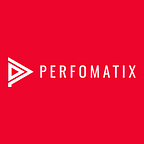Covid-19 : Impact on E-Learning Solutions | Perfomatix | Full Stack Engineering Company
With the outbreak of the deadly pandemic, the education system worldwide endorsed an unprecedented change disrupting the education of 290.5 million students (an approximate figure by UNESCO) globally. Closed institutes and on-hold regular classes during the lockdown period forced various educational institutions to make fast technology choices for virtual classes and online learning as a rapid and sustained response to COVID-19.
Despite the significant impact on the student population, the COVID-19 pandemic has accelerated a series of trends within the online — learning sector. The sector is turning this hour of crisis into a chance to innovate or update their existing business models by addressing their inefficiencies and creating solutions with newer and more optimized workflows.
Traversing From Traditional Learning
As could be expected, this pandemic is accelerating the change of the centuries-old, face-to-face in the classroom teaching model to the one driven by technology to even the remote areas within a short time. Educational Institutions, teachers, instructors, families, and learners have adopted e-learning at large, where teaching is undertaken remotely and on digital platforms.
Virtual learning approaches — Synchronous or Asynchronous Learning
The two options for instructors by which the class sessions can be facilitated remotely are Synchronous and asynchronous teaching modes. In synchronous teaching, instructors and students interact in real-time by gathering via a virtual video/audio chat tool at a common time from their respective locations. On the other hand, for asynchronous teaching — instructors prepare course materials for students in advance. Students may access these course materials at a time of their choice and can access them when it best suits their schedule. Resources like forums, lessons, URLs, pre-recorded videos, uploaded files, and workshops will act as the key features while considering the asynchronous teaching methodology.
Instructors may choose to engage their students synchronously or asynchronously, relying on many factors, including course content or material that needs to be taught, the feasibility of technical options, etc.
Personalized Learning
Each child is unique in terms of their different learning abilities. Hence, it is crucial to address their needs differently and individually for getting better outcomes. Personalized learning indicates an extended set of strategies intended to make each student’s educational experience responsive to their interests and needs. Prioritizing the needs of an individual learner starting from the course curriculum to the students’ learning and assessment pattern has increased the popularity of personalized learning. Various e-learning vendors have been providing customized learning tools for educational institutions to personalize the curriculum as per the scholars’ learning patterns. With features like anytime-anywhere learning (including engaging animated videos, quizzes, revision notes, and summaries), sample papers, unlimited practice tests with varying difficulty levels, and personalized learning to range from remedial to advanced lessons, with easy access to all or any of its resources has made online learning far more interactive, engaging and effective for learners.
Data Analytics in E-Learning
Learning Analytics is gaining its popularity in digital learning with the following benefits to aid the training outcomes;
- Comparing the performance of an individual learner or group of learners
- Tracking and analyzing real-time performance and learning progress
- Suggesting the course contents based on interests
- Customizing the assessments, setting test benchmarks
- Evaluating the learning outcomes using tools such as predictive analytics, machine learning, and multi-source mapping.
Thus with the help of Data Analytics, it is easy to design a system that caters to the needs of various stakeholders of the education industry, including students, parents, and teachers.
Post COVID-19: Educational Apps As A Learning Supplement
Online learning platforms aren’t only seizing the chance to expand during the era of home confinement; they seek to form those gains permanently after the pandemic subsides. Moreover, the return to normality won’t be a simple one-time transition to life as it used to be, and so will be the education sector’s case. Precautionary measures from the education sector are much needed against second and third waves of COVID-19 outbreaks or similar home confinement emergencies. Although institutions that usually teach face-to-face in classrooms or on campuses will likely return to that mode of instruction with some relief, the special arrangements they put in situ during the COVID-19 crisis will leave an enduring trace. The expansion of online learning in all levels of academic and skill development areas will further accelerate, and educational institutions will organize themselves more systematically to pursue the aspects of online learning that they have found most useful.
The future education system can utilize the approach of blended learning courses that mix online and in-person learning for effectively coordinating the student needs anytime and anywhere. Students can be empowered to learn for themselves flexible, often collaborative ways, both inside and outside classrooms, at their own pace. Providing a variety of courses with flexibility of time and adaptability of place for learning might be a new attractive norm in the future of education systems.
Would you like to know more about e-learning solutions?
Feel free to drop in a note for us right now. Talk to our experts now and let us be your innovation partner!
Originally published at https://www.perfomatix.com on September 16, 2020.
